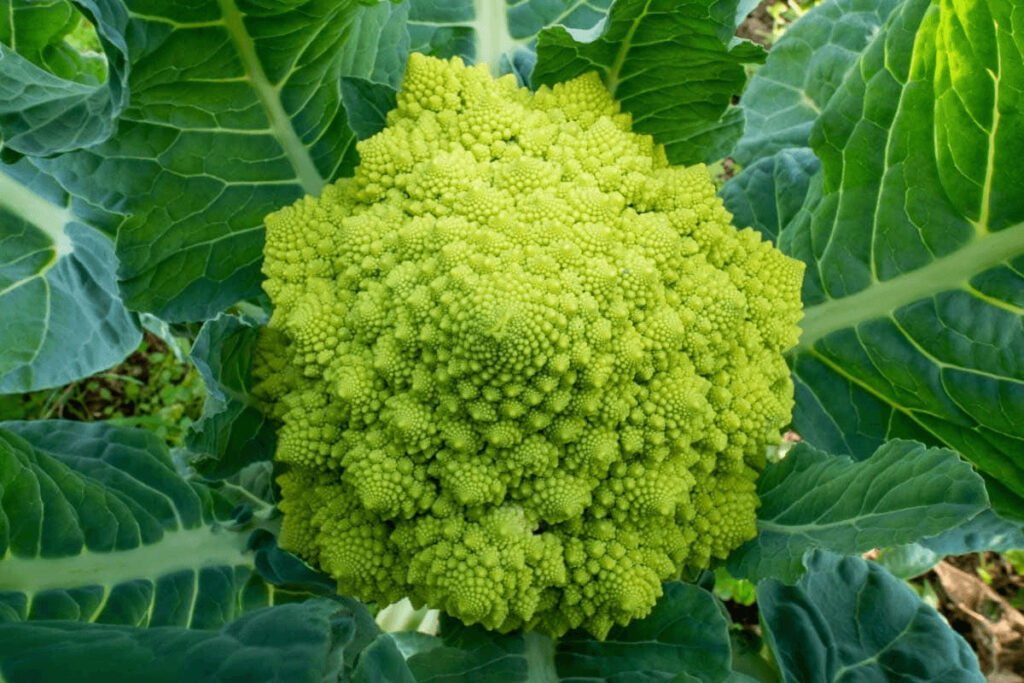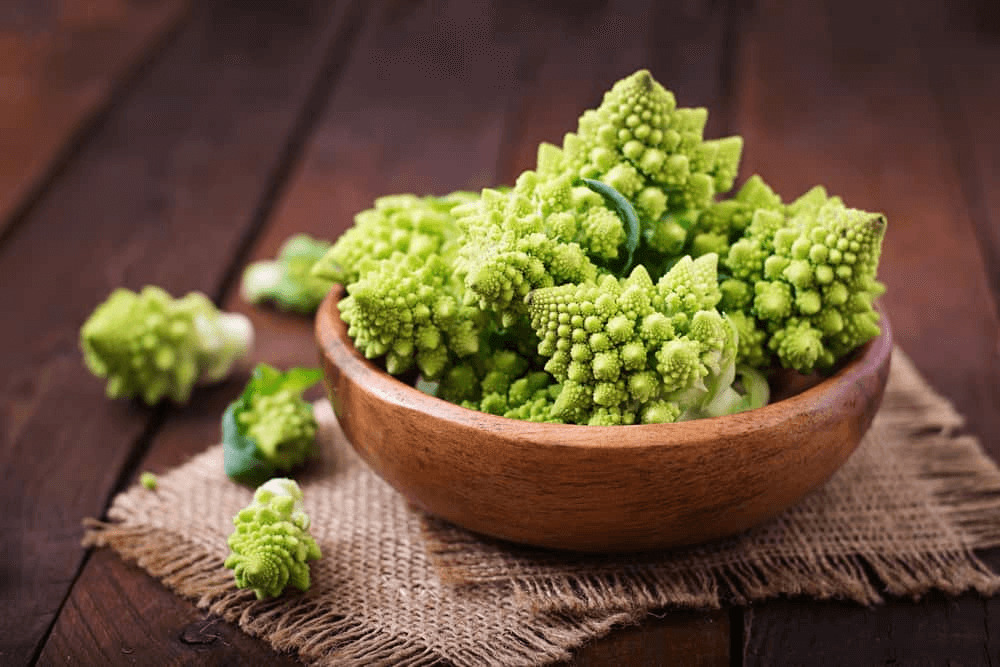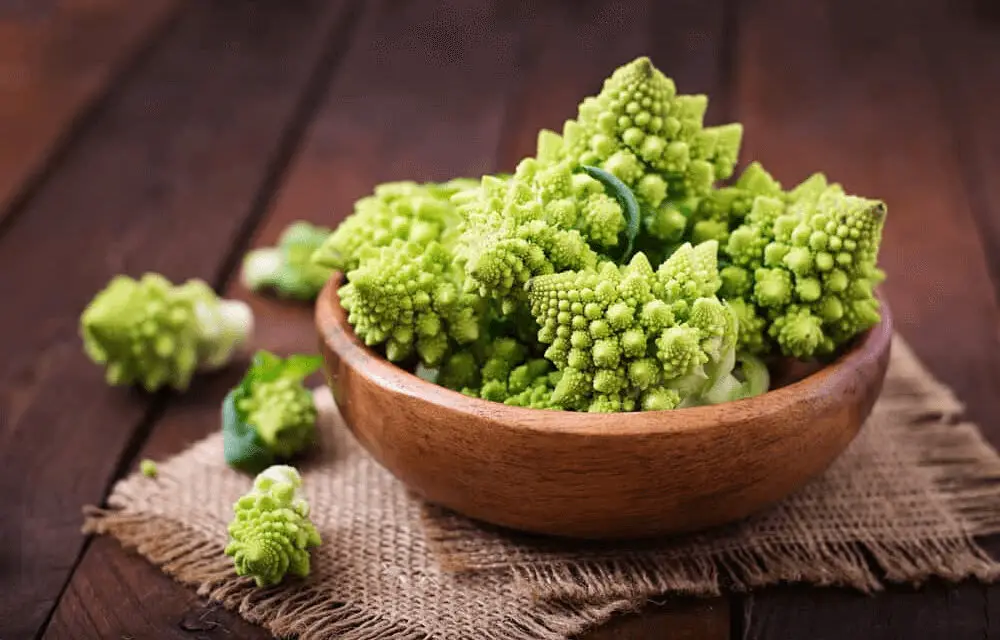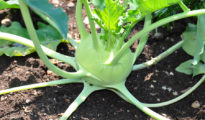Romanesco broccoli, with its striking appearance and intriguing history, is a true gem in the world of vegetables. This beautiful, fractal-patterned cousin of cauliflower and broccoli offers gardeners a unique, delicious, and nutritious addition to their gardens and plates. In this comprehensive guide, we'll explore everything you need to know about Romanesco broccoli: its history, how to grow, plant, and harvest it, its taste, and some delicious ways to cook with it.

What is Romanesco Broccoli?
Romanesco broccoli (Brassica oleracea var. botrytis), also known as Roman cauliflower, is a cruciferous vegetable belonging to the same family as broccoli, cauliflower, kale, and Brussels sprouts. It is characterized by its bright green color and intricate, spiral-shaped florets, which form a beautiful fractal pattern. This visually stunning vegetable has been growing in popularity due to its unique appearance, rich flavor, and high nutritional content, packed with vitamins C and K, fiber, and antioxidants.
The History of Romanesco Broccoli
Romanesco broccoli is believed to have originated in the Mediterranean region, specifically Italy, where it has been cultivated since the 16th century. The name “Romanesco” is derived from the Italian word “romano,” which means “from Rome.” It gained popularity throughout Europe over the centuries, eventually making its way to the United States and other parts of the world.
How to Grow Romanesco Broccoli
Soil and Climate Requirements
Romanesco broccoli thrives in well-draining, fertile soil with a pH of 6.0 to 7.0. It is a cool-season crop, preferring temperatures between 60 and 70°F (15-21°C). It is best to grow Romanesco broccoli in the spring or fall, as it can bolt or become bitter in high heat.
Planting Romanesco Broccoli
Start Romanesco broccoli seeds indoors 4-6 weeks before the last expected frost date. Plant the seeds in seed trays or small pots filled with seed-starting mix, about ¼ inch deep. Keep the soil consistently moist and provide a steady light source, such as a sunny windowsill or grow lights. Once the seedlings have developed two sets of true leaves, transplant them outdoors, spacing them about 18-24 inches apart in rows that are at least 24 inches apart.
Caring for Romanesco Broccoli
Water your Romanesco broccoli regularly, providing about 1-1.5 inches of water per week. Consistent moisture is essential for the healthy development of the plants. Apply a balanced, all-purpose fertilizer every 3-4 weeks, following the package instructions. Mulch around the plants to help retain moisture, suppress weeds, and regulate soil temperature.
Pests and Diseases
Romanesco broccoli, like other cruciferous vegetables, is susceptible to a variety of pests and diseases. Common pests include cabbage worms, aphids, and flea beetles. To control these pests, use organic methods such as hand-picking, beneficial insects like ladybugs and lacewings, or organic insecticides like neem oil or Bt (Bacillus thuringiensis).
Common diseases affecting Romanesco broccoli include clubroot, black rot, and downy mildew. Practice crop rotation, proper spacing, and good sanitation to help prevent these diseases.
How to Harvest Romanesco Broccoli
Romanesco broccoli is ready for harvest when the heads are firm and well-formed, usually around 75-100 days after transplanting. The heads should be about 6-8 inches in diameter. To harvest, use a sharp knife to cut the stem about an inch below the head. It's best to harvest in the morning when the plants are cool and hydrated for optimal flavor and texture.
What Does Romanesco Broccoli Taste Like?

Romanesco broccoli has a flavor that is a cross between cauliflower and broccoli, with a mild, nutty, and slightly earthy taste. Its texture is tender and slightly crunchy when cooked.
How to Cook with Romanesco Broccoli
Romanesco broccoli is a versatile vegetable that can be prepared in various ways, much like cauliflower or broccoli. Here are a few delicious ideas to get you started:
- Roasted Romanesco Broccoli: Toss the florets with olive oil, salt, and pepper, then roast them in a preheated oven at 400°F (200°C) for about 20-25 minutes, or until tender and slightly browned. For additional flavor, add garlic, lemon zest, or Parmesan cheese.
- Romanesco Broccoli Stir-Fry: Cut the Romanesco broccoli into florets and stir-fry with your choice of vegetables, protein, and sauce. It pairs well with onions, bell peppers, mushrooms, tofu, chicken, or shrimp.
- Romanesco Broccoli Soup: Sauté onions and garlic in olive oil, then add chopped Romanesco broccoli, vegetable or chicken broth, and seasoning. Simmer until the broccoli is tender, then blend the soup until smooth. Add cream or coconut milk for a richer texture.
- Steamed Romanesco Broccoli: Steam the florets for about 5-7 minutes, or until tender. Serve with a squeeze of lemon juice, a drizzle of olive oil, and a sprinkle of salt and pepper.
- Romanesco Broccoli Gratin: Arrange blanched Romanesco broccoli florets in a baking dish, then top with a mixture of béchamel sauce, grated cheese, and breadcrumbs. Bake at 350°F (180°C) for about 25-30 minutes, or until golden and bubbly.
Romanesco broccoli is an incredible vegetable that deserves a place in any garden and kitchen. Its fascinating appearance, delicious taste, and versatility make it a standout addition to your garden and meal rotation. With this comprehensive guide, you're now equipped with everything you need to know to successfully grow, harvest, and cook with Romanesco broccoli. Enjoy the process and, most importantly, the delicious results!



















